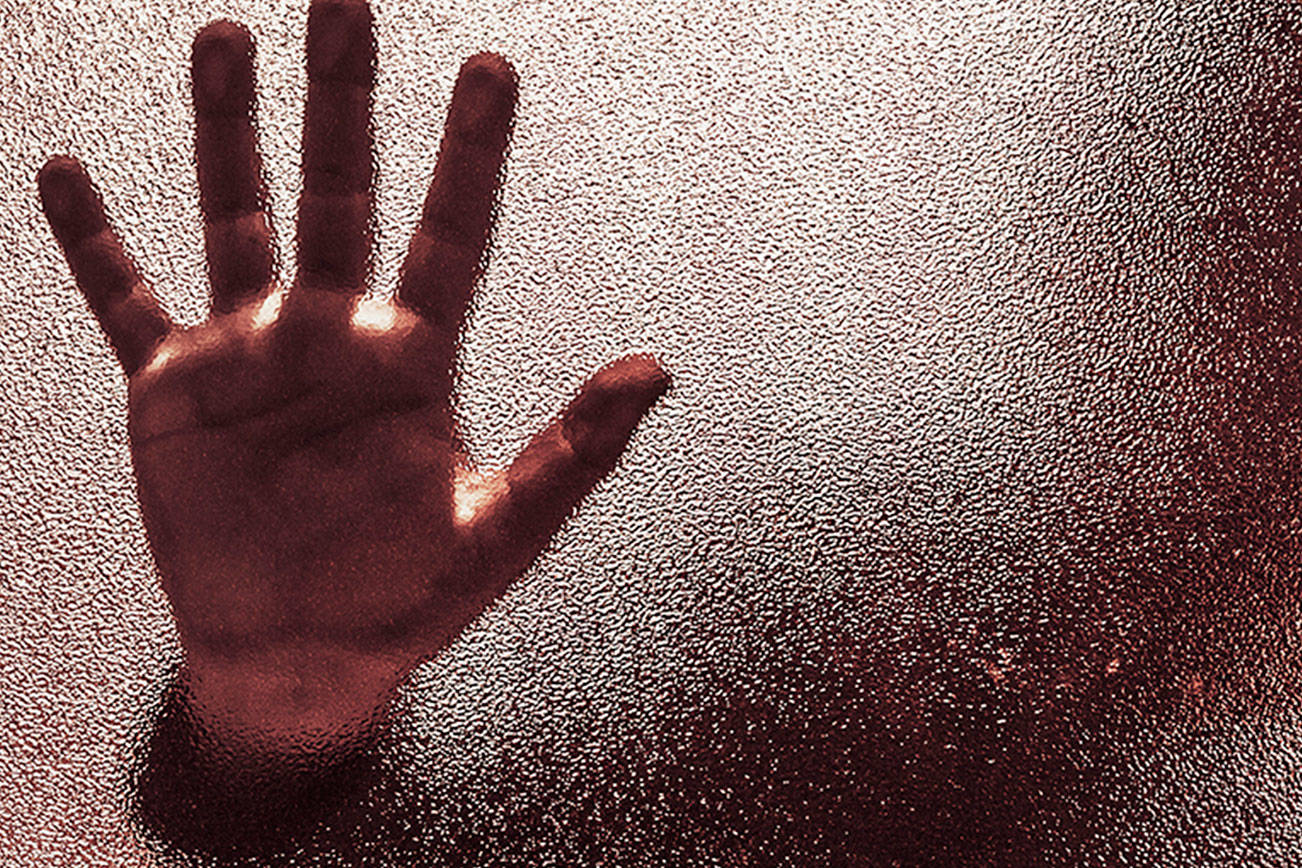Note: Names have been changed in this story to protect the privacy of the youth involved.
ItŌĆÖs Wednesday, and Adam is staying in a rehab facility in the Fraser Valley.
But by Thursday, his mom Kate knows he could be anywhere. At just 18, the Chilliwack teen has been bounced in and out of almost every type of supportive housing available, most often in group homes filled with other troubled youth.
ItŌĆÖs such a chaotic timeline, that in the end, even the Ministry of Children and Families refused him housing.
Through his teen years, Adam has slept in a treehouse, on the streets, and surfed from couch to couch with family and friends ŌĆö that is until welcomes are worn out. He hasnŌĆÖt lived at the family home for more than two years now; last summer, when he called his mom from the Fraser Valley detox centre heŌĆÖd been staying at, he begged to come home. He made the same promises heŌĆÖd made before. But by then, she knew she had to look out for her safety.
So the answer was a painful one, for both of them. ItŌĆÖs the answer parents of teens like Adam have to give repeatedly.
ŌĆ£N┤Ū.ŌĆØ
But that doesnŌĆÖt mean she isnŌĆÖt helping him. In fact, hearing ŌĆśnoŌĆÖ is part of the help he needs.
This is now AdamŌĆÖs fifth time in rehab. He lasts for a while, then ends up in the same, familiar patterns. Drugs, violence, theft, property damage, lying. For years the only drug heŌĆÖd admit taking was marijuana, but his mom knew it went deeper than that. Now she knows he takes Xanax and does cocaine, among whatever else he may have tried, or will try in the future.
She isnŌĆÖt giving up on him. She meets regularly with government workers and social workers. She stays informed, she asks questions, and she pushes for assistance.
ŌĆ£I want to do everything I can to help him,ŌĆØ Kate says. ŌĆ£And I wonŌĆÖt stop.ŌĆØ
While Kate and her husband divorced several years ago, she doesnŌĆÖt feel it caused AdamŌĆÖs downfall. In truth, he was exhibiting signs of a disorder as early as the age of five, including attachment disorders, ADHD, oppositional defiant disorder, and fetal alcohol syndrome. As an adopted infant, his family history was sparse. Kate believes if someone told them about his higher potential for drug use, she would have been able to provide her son with effective life skills earlier. She would have armed herself with the knowledge to help him learn to navigate what was sure to be a difficult life.
She could have prepared her herself sooner, too. But sheŌĆÖs delved into research and information for years now, learning how to help him now that itŌĆÖs come so far. She will always be his mom, she says.
ŌĆ£That part of the brain is damaged,ŌĆØ she explains. ŌĆ£HeŌĆÖs so impulsive. He just wants what he wants.ŌĆØ
But thanks to access from MCFD counselling, she has learned not to blame or berate herself. And no, she wouldnŌĆÖt have changed her mind if she knew then what she knows now.
She cries at the thought of him being unwanted, or raised in a home without the stability and financial security his two professional parents were able to give him. SheŌĆÖs been told by the social workers that if he hadnŌĆÖt been adopted by them, AdamŌĆÖs life likely would have been even worse.
Still, having a child with mental health and drug issues is financially draining. And trying to find information on her son as he ages is becoming increasingly difficult. When he recently overdosed, he ended up in a Vancouver hospital.
ŌĆ£Nobody even phoned me,ŌĆØ she says. She found out days later, by chance from a worker who mentioned it off the cuff.
ŌĆ£It happened on a Friday and they called me on Monday and said ŌĆśheŌĆÖs going into detox now,ŌĆÖŌĆØ she said.
The worker looking through AdamŌĆÖs file added: It looks like he was resuscitated.
Despite the years of pain and anguish theyŌĆÖve been through as a family, she is thankful to be his mother.
But with every birthday, Adam has been getting closer to going from a supported youth in the system, to being an adult fending for himself. ThatŌĆÖs something Kate doesnŌĆÖt think he has the skills for yet. His life has already been threatened on the street.
She was told at her own door by a group of about half a dozen teens: ŌĆ£You can kiss your fŌĆÖing son goodbye.ŌĆØ
School has never been easy for him, even in ChilliwackŌĆÖs alternate programs.
MCFD says their policy ŌĆ£requires that all youth who are leaving care and transitioning into the next phase of their lives must have a plan of care in place. The plans are developed by social workers in collaboration with the youth, their family and their caregiver and include preparations for adulthood and independence.ŌĆØ
READ:
Child protection services are available up until a childŌĆÖs 19th birthday, they say.
ŌĆ£In keeping with transition plans, our involvement doesnŌĆÖt end there,ŌĆØ a ministry spokesperson told The Progress. Changes started taking place once power transferred from the Liberal to the NDP government. They are changes that have been noticed by other Chilliwack families with children in the system,, the parents of Nick Lang. He died in a foster home in an apparent suicide.
TheyŌĆÖve announced they are covering tuition for former youth in care. That wonŌĆÖt help Adam, who hasnŌĆÖt been able to graduate. And heŌĆÖs likely not alone.
ŌĆ£We also offer the Agreements with Young Adults (AYA) program, which helps young adults to successfully transition to adulthood by providing support to obtain a high school diploma, obtain job skills through a vocational program; attend college or university; and/or complete a life skills or rehabilitation program.ŌĆØ
The AYA program is being improved with more ŌĆ£wraparound supports,ŌĆØ the MCFD added.
As of Jan. 31, 2018, Chilliwack had a total of 248 children and youth in care with 167 youth residing in foster homes, 38 living in group homes and the rest in other forms of care.
At that time there were seven group homes in Chilliwack. They arenŌĆÖt obvious to passersby, says Kate, and who is staying at them changes regularly. Kids arenŌĆÖt always kept in their home community, including Adam, who has been moved around the Fraser Valley.
The ministry added that the total number of youth in care in B.C. as of Jan. 31 was 6,804. Of that total number, 4,734 were living in a foster home and 838 were living in group homes.
ŌĆ£Warehousing,ŌĆØ Kate calls it. ŌĆ£ThatŌĆÖs what it is.ŌĆØ
ItŌĆÖs not that she lacks faith in the people running the system, she adds.
ŌĆ£ThatŌĆÖs probably the wrong word, but I know theyŌĆÖre overworked, understaffed. I know they care.ŌĆØ
But kids continue to slip through the gaping holes in the system. And parents like Kate are left catching them and looking for better support systems.
While AdamŌĆÖs dad had terminal cancer, life with Adam hit a crisis point. He began stealing from close friends and family. ThatŌĆÖs when they set him up with MCFD.
Adam was 15 then, and MCFD kept him under their somewhat broken wings for two years. Because heŌĆÖs high risk, heŌĆÖs not a good candidate for foster care. At the age of 17, he was released from MCFD and set out on his own. He was homeless.
Worse yet, his mom says, there is no plan laid out for when he leaves. ThereŌĆÖs no next step. With all bridges burned in his past, and people out to get him, he will likely end up on the street once again.
ŌĆ£I just tell him, letŌĆÖs take this one day at a time,ŌĆØ she says.
Kate has parcels of time where she can account for her sonŌĆÖs whereabouts, and times he falls off the map. He tells her stories sheŌĆÖs not sure she can believe, and ones she can.
Group homes are a sort of dorm situation where youth have their own rooms but all other spaces are shared. ThereŌĆÖs an adult living in the house too, who is in charge of the kids, usually an older adult who struggles to keep tabs on the kids, Kate says. Ministry workers and counsellors can keep tabs on the kids, and move them to a different style of group home once theyŌĆÖre settled.
ItŌĆÖs not a perfect situation. When Adam would arrive back at a group home late, missing the strict 6 p.m. dinner bell, he would start making his own dinner. Rules are extremely important for impulsive youth, and part of teaching those life skills theyŌĆÖll need in adulthood. Eventually, his mother says, the staff was resorting to extreme measures for Adam (and others) to comply.
ŌĆ£They would take out the [stove] elements,ŌĆØ she says. ŌĆ£They had to put a lock on the fridge.ŌĆØ
These are the types of rules that send Adam over his tipping point. With no one to force him to stay in any one place ŌĆö without any legal requirement to force him to stay ŌĆö the young teen would simply just leave.
And once again, heŌĆÖd disappear.
Over the years, KateŌĆÖs slept with her purse at her head, between her own pillow and that of her new spouse. That wasnŌĆÖt enough to keep it safe. Her son has stolen money, cell phones, and even her own car. He has tried to break into her home, and succeeded. HeŌĆÖs broken into her own locked bedroom to access her valuables.
She has sleepless nights, doesnŌĆÖt eat right, canŌĆÖt always focus at work, doesnŌĆÖt like to use social media because other parents are often bragging about their perfect children.
So as heartbreaking as it is for a mother to put her feelings aside, thatŌĆÖs exactly what sheŌĆÖs learned to do.
ŌĆ£In order to protect yourself you learn to remove the emotion,ŌĆØ she says. ŌĆ£ItŌĆÖs mentally and physically tiring. And until you live it, you donŌĆÖt understand.ŌĆØ
Kids like Adam donŌĆÖt go to foster homes for numerous reasons. Mainly, the issues they are dealing with are beyond the reach of foster parents, and they could pose a threat to other foster children. What Kate wants other people to know, other people who encounter difficult youth or homeless people, is that ŌĆ£everyone has a story.ŌĆØ
ŌĆ£I want them to know that theyŌĆÖre not trying to piss you off. That itŌĆÖs just who they are.ŌĆØ
She says her son lacks empathy, and has difficulty learning. At 18, heŌĆÖs only completed Grade 9. But there are still doors open for him, and she holds out hope that he can find a positive path to his future. HeŌĆÖs very resourceful, very clever, with a unique brand of humour, and impeccable manners when he wants to display them.
ŌĆ£HeŌĆÖs not trying to be difficult, heŌĆÖs just trying to find his place,ŌĆØ she says.
But when the time comes for Adam to leave rehab ŌĆö today, tomorrow, next week ŌĆö she fears he will have nowhere to go.
***
For more information on services available to youth in and from care, visit these websites:
┬Ę
┬Ę
┬Ę
┬Ę
┬Ę
READ ALSO:




